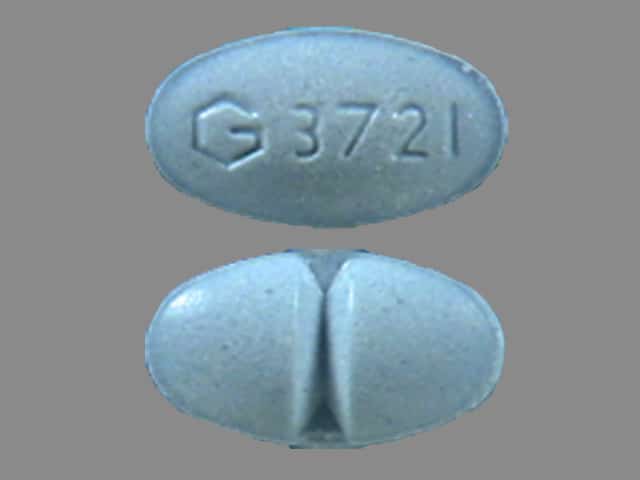Naproxen, a pain-relieving medication, alleviates inflammation and stiffness in joints. Other nonsteroidal anti-inflammatory drugs (NSAIDs) within the same category include acetylsalicylic acid, diclofenac, ibuprofen, and meloxicam.
Its mechanism involves inhibiting the enzyme responsible for prostaglandin production. Prostaglandins play a crucial role in inflammation, being produced at the site of injured tissue and contributing to redness, heat, swelling, and pain.
Naproxen is offered in two forms, namely naproxen and naproxen sodium. The primary distinction lies in the faster absorption rate of naproxen sodium. Peak levels of naproxen are reached within 2–4 hours, while naproxen sodium achieves peak levels in 1–2 hours, indicating a quicker absorption rate for naproxen sodium compared to regular naproxen.
Uses
Naproxen is employed for the treatment of various conditions, including:
- Rheumatoid arthritis
- Osteoarthritis
- Ankylosing spondylitis
- Juvenile arthritis
- Tendonitis
- Bursitis
- Gout attacks
- Muscle aches, strains, and sprains
- Headaches
- Dental pain
- Menstrual cramps
- Fever
Brand names
In the United States, the over-the-counter (OTC) version of naproxen is marketed under the brand name Aleve. The prescription forms of naproxen are recognized as Naprosyn and Anaprox.
Read Also: ATV 40 pill: Uses, Dosage, Side Effects, Addiction
Pros and Cons of Naproxen
Pros
- Pain Relief
- Anti-Inflammatory
- Fever Reduction
- Available Over-the-Counter
Cons
- Gastrointestinal Side Effects
- Cardiovascular Risks
- Kidney Issues
- Blood Pressure
Differences Between Naproxen and Pantoprazole
Naproxen
It is commonly used to relieve pain associated with conditions like osteoarthritis, rheumatoid arthritis, menstrual cramps, and other inflammatory conditions. It can also help reduce fever.
Pantoprazole
It is mainly prescribed for the treatment of conditions where excess stomach acid causes heartburn and damage to the esophagus, such as gastroesophageal reflux disease (GERD) and peptic ulcers.
Alternative to Naproxen
Acetaminophen (Paracetamol)
- Class: Analgesic (pain reliever)
- Uses: Pain relief and fever reduction.
- Considerations: Does not have the anti-inflammatory properties of NSAIDs. Should be used cautiously in high doses or for prolonged periods due to potential liver toxicity.
Ingredients
Naproxen is offered in various types and strengths. Regular naproxen tablets come in 250 milligrams (mg), 375 mg, or 500 mg of naproxen.
Fast-absorbing naproxen sodium is accessible in 220 mg over-the-counter (OTC) capsules and tablets, as well as in 275 mg and 550 mg tablets with a prescription. Low-dose naproxen is presented in tablet or capsule form.
For individuals, especially children or those with difficulty swallowing tablets, naproxen suspension is available, containing 25 mg of the drug per milliliter (ml).
The table below enumerates the inactive ingredients found in regular naproxen, naproxen sodium, and naproxen suspension. It is essential for individuals with allergies or intolerances to be cautious and avoid using naproxen if they are sensitive to any of these inactive ingredients.
| Ingredient | Naproxen | Naproxen Sodium | Naproxen Suspension |
|---|---|---|---|
| microcrystalline cellulose | Yes | Yes | Yes |
| croscarmellose sodium | Yes | Yes | Yes |
| povidone | Yes | Yes | Yes |
| magnesium stearate | Yes | Yes | Yes |
| iron oxide | Yes | - | - |
| colloidal silicon dioxide | - | Yes | - |
| talc | - | Yes | - |
| methylparaben | - | - | Yes |
| fumaric acid | - | - | Yes |
| magnesium aluminum silicate | - | - | Yes |
| sodium chloride | - | - | Yes |
| sorbitol solution 70% | - | - | Yes |
| sucrose | - | - | Yes |
| flavor | - | - | Yes |
| FD&C Yellow No. 6 | - | - | Yes |
Dosage and forms
Naproxen is accessible in various formulations, including tablets, liquid capsules, and liquid form.
The required dosage of naproxen depends on the purpose of its usage. A general guideline is to use the lowest effective dose for the shortest duration, minimizing the risk of side effects.
Medical professionals recommend taking naproxen and other NSAIDs with food to mitigate potential gastrointestinal side effects.
For mild to moderate pain and fever, adults aged 12 to 65 can take one 220 mg tablet of naproxen every 12 hours. Children under 12 should only use naproxen under a doctor's guidance.
To manage symptoms of osteoarthritis, rheumatoid arthritis, and ankylosing spondylitis, individuals can take 220 mg to 550 mg of naproxen every 12 hours. While naproxen doesn't cure these conditions, it provides relief from pain and inflammation.
During acute gout attacks, a one-time dose of 825 mg, followed by 275 mg every 8 hours, may be taken.
Juvenile rheumatoid arthritis can be managed with naproxen in liquid suspension form for children aged 2 and older. The recommended dose is 10 mg per kilogram (kg), divided into two doses 12 hours apart.
The use of naproxen for relieving headache and migraine pain is debated. Individuals can try taking 550 mg every 12 hours, increasing to 825 mg if necessary, with a maximum daily dose not exceeding 1,375 mg.
Naproxen sodium degrades more slowly than regular naproxen and other NSAIDs, providing a longer duration of activity. However, headache pain relief may be lower after 2 hours compared to other NSAIDs.
Although naproxen can alleviate headache and migraine pain, other NSAIDs might offer better relief.
For over-the-counter (OTC) naproxen use, it is recommended for short-term pain relief (3–5 days) and no more than 3 days for fever. Consultation with a doctor is advised for prolonged treatment.
In children aged 2–12, the maximum daily dose by weight is 20 mg/kg, not exceeding 1,000 mg in 24 hours. For OTC use in those 12 and older, the maximum daily dose is 660 mg in 24 hours.
Studies have not shown added benefits in daily doses exceeding 1,000 mg, but some sources suggest a maximum of 1,650 mg per day for up to 6 months for arthritis, though this should be monitored under medical guidance.
Side effects
The occurrence and intensity of side effects induced by naproxen are contingent upon various factors.
Factors such as the dosage and duration of treatment, existing medical conditions, and individual risk factors play a crucial role in determining the nature and extent of side effects associated with naproxen.
The subsequent sections elaborate on both the typical and severe side effects associated with the use of naproxen.
Common side effects
The table below, derived from the naproxen monograph, categorizes the most prevalent side effects according to body systems. These side effects, as outlined in the table, are observed in approximately 3–9% of individuals.
| Body System | Side Effects |
|---|---|
| Gastrointestinal Tract | Heartburn, constipation, abdominal pain, nausea |
| Central Nervous System | Headache, dizziness, drowsiness, depression, fatigue |
| Skin | Itchy skin, ecchymoses, skin eruptions |
| Cardiovascular System | Dyspnea, peripheral edema |
| Senses | Ringing in the ear |
Serious side effects
While low-dose naproxen is available without a prescription, it may not be suitable for everyone due to potential risks.
Individuals with significant heart conditions, such as heart disease, cerebrovascular disease, and congestive heart failure, may face severe adverse effects when using naproxen.
Notable side effects of naproxen include heart attack, stroke, and the formation of blood clots. Those with high blood pressure should exercise caution when considering naproxen, as it can lead to sodium retention in the kidneys, contributing to elevated blood pressure. It is advisable for individuals with hypertension to consult their doctor before using naproxen.
Naproxen usage can also result in serious gastrointestinal complications, including stomach bleeding, ulcer formation, and intestinal blockages. Older adults are particularly susceptible to such side effects. Individuals with a history of ulcers or gastrointestinal bleeding face a tenfold higher risk of experiencing a bleed while taking naproxen. Even short-term treatment can pose a significant risk for these individuals.
Conclusion
While low-dose naproxen is readily available without a prescription, it is imperative to recognize that its usage may not be universally safe. Particularly for individuals with serious heart conditions or high blood pressure, the potential for severe side effects such as heart attack, stroke, and blood clot formation underscores the importance of cautious consideration and consultation with a healthcare professional.
Moreover, the gastrointestinal risks associated with naproxen, including stomach bleeding, ulcer formation, and intestinal blockages, emphasize the need for careful assessment, especially among older adults and individuals with a history of ulcers or gastrointestinal bleeding. The decision to use naproxen, even in low doses, should be made judiciously, taking into account individual health profiles and potential risks.
Ultimately, seeking guidance from a healthcare provider is crucial to ensure that the benefits of naproxen use outweigh the potential risks, thereby promoting safe and informed decisions regarding its appropriateness for each individual.



